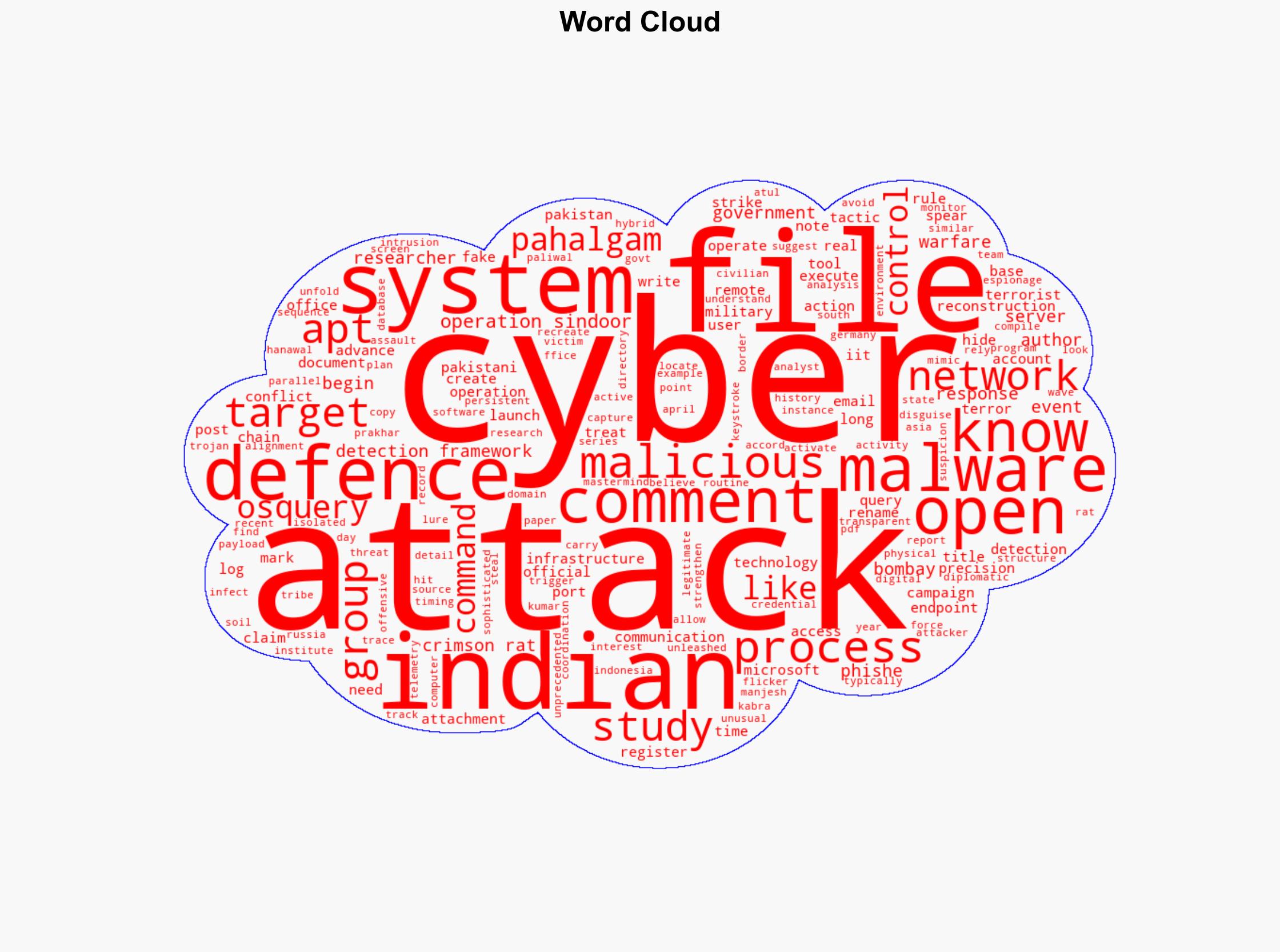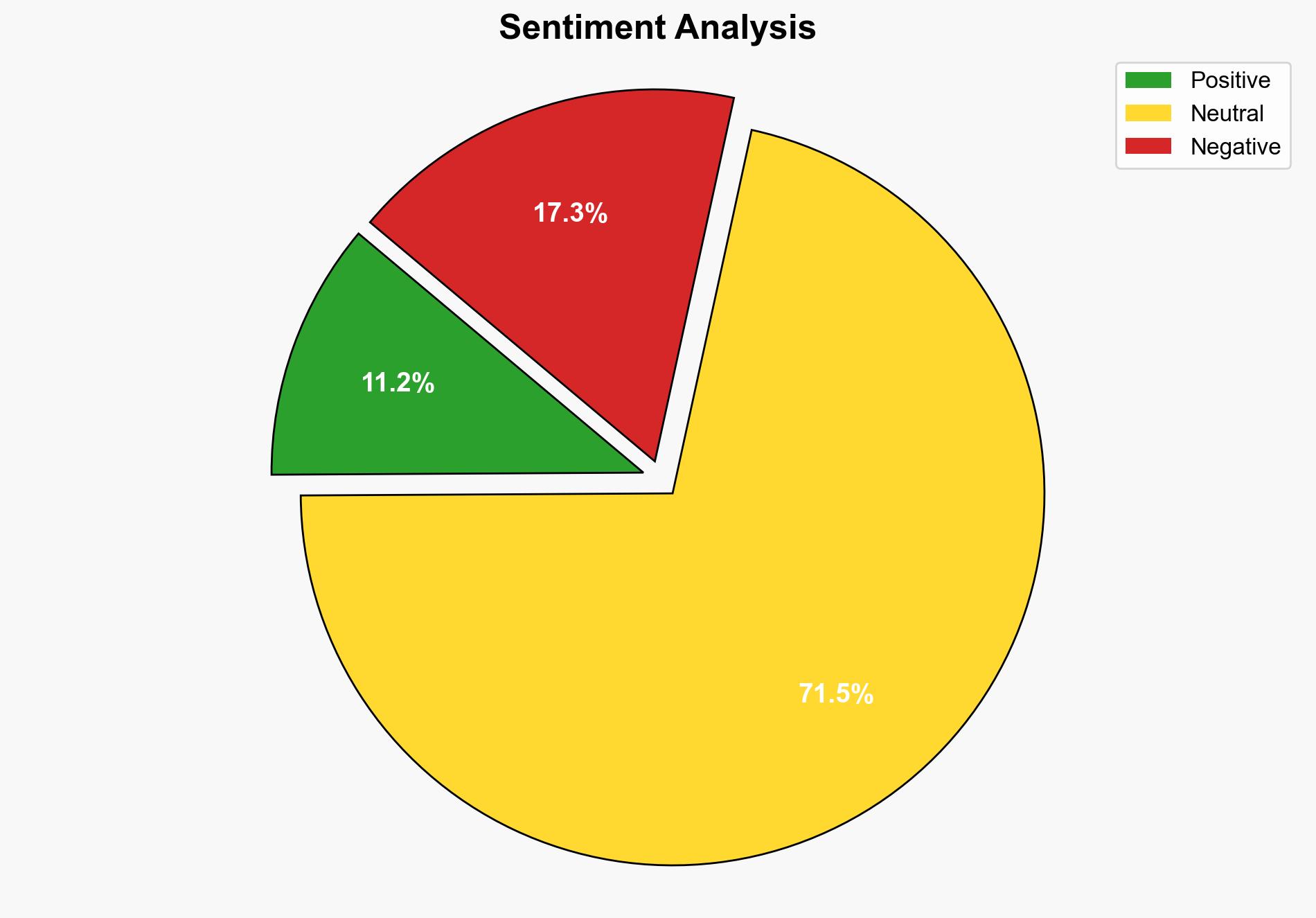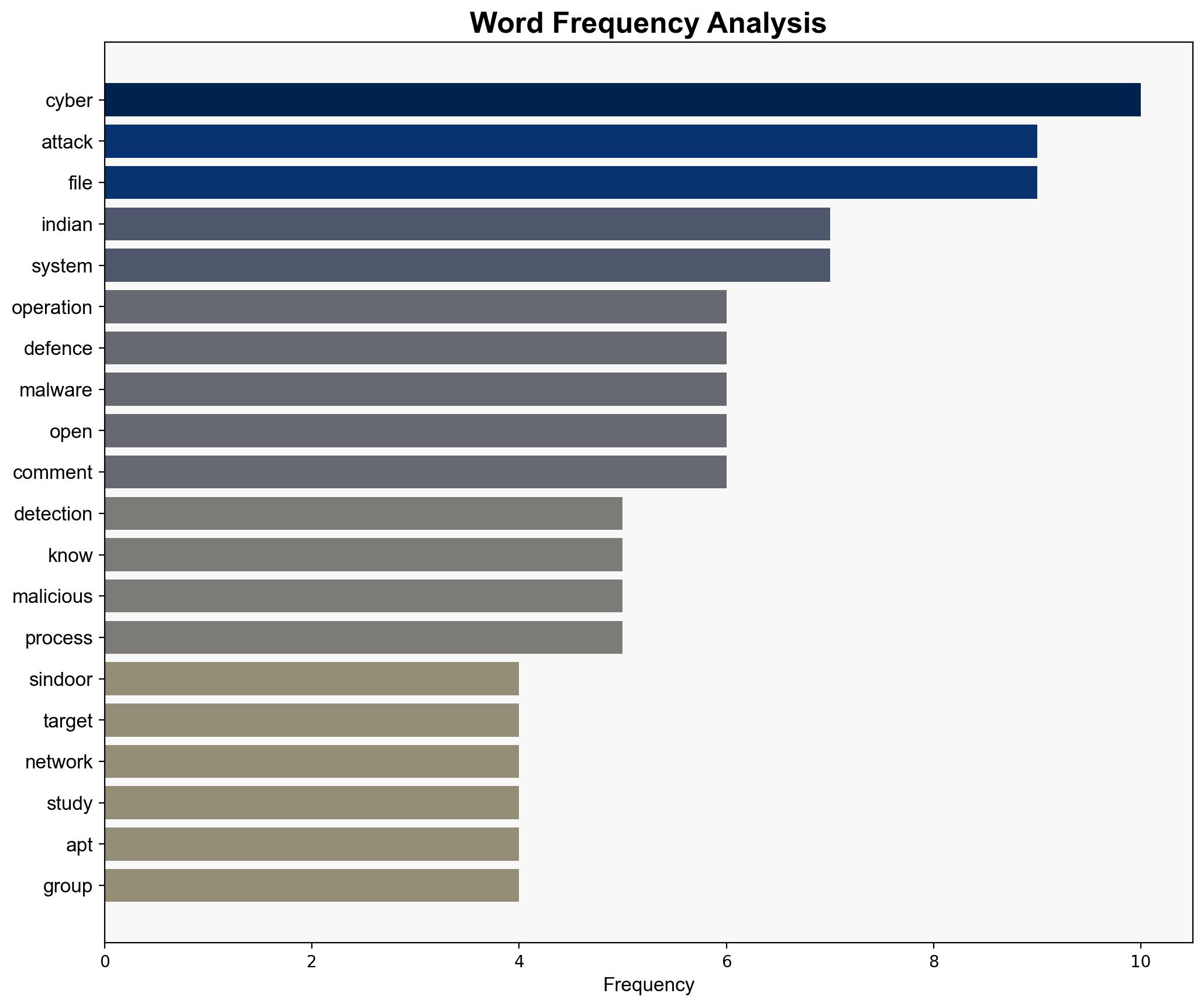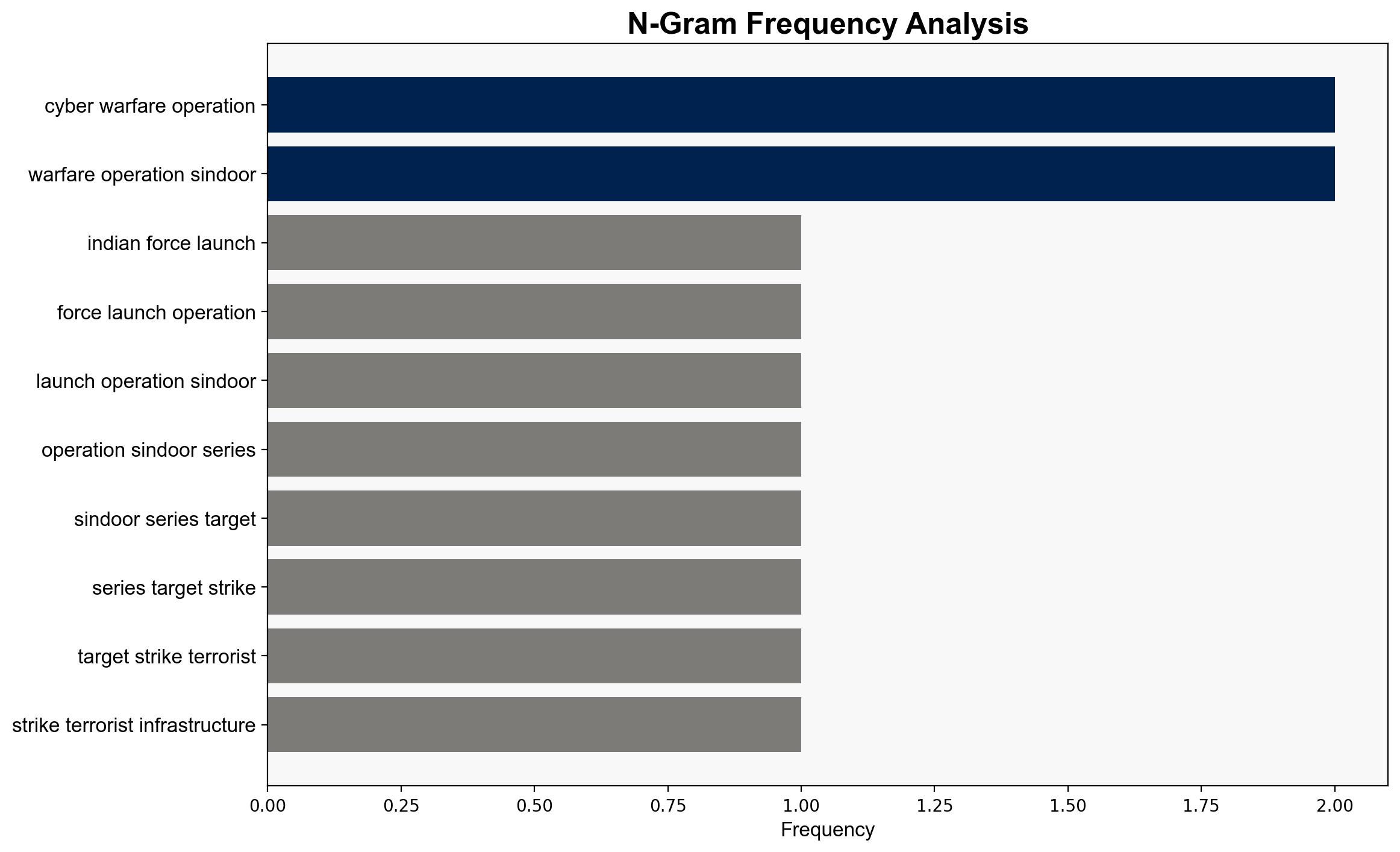Reinforcements for the cyber frontline – BusinessLine
Published on: 2025-11-03
Intelligence Report: Reinforcements for the cyber frontline – BusinessLine
1. BLUF (Bottom Line Up Front)
The most supported hypothesis is that the cyber attacks associated with Operation Sindoor were a coordinated effort by a Pakistan-based APT group, Transparent Tribe, aligned with state interests, to complement physical terrorist operations. Confidence in this assessment is moderate due to the sophistication and timing of the attacks. Recommended actions include enhancing cybersecurity measures, particularly in government and defense sectors, and increasing diplomatic pressure on Pakistan to address state-sponsored cyber activities.
2. Competing Hypotheses
1. **Hypothesis 1**: The cyber attacks were orchestrated by the Transparent Tribe APT group with direct support from Pakistani state actors to synchronize with physical terrorist activities, demonstrating a sophisticated hybrid warfare strategy.
2. **Hypothesis 2**: The cyber attacks were independently conducted by the Transparent Tribe APT group without direct state involvement, aiming to exploit the geopolitical tensions for their own strategic gains.
Using the Analysis of Competing Hypotheses (ACH) 2.0, Hypothesis 1 is better supported due to the precise timing and coordination with physical attacks, which suggests a level of strategic planning and resource allocation indicative of state support.
3. Key Assumptions and Red Flags
– **Assumptions**: It is assumed that the timing and sophistication of the attacks require state-level resources and coordination. The attribution to Transparent Tribe is based on historical patterns and technical indicators.
– **Red Flags**: The reliance on open-source intelligence and potential biases in attributing state involvement without direct evidence. The possibility of false flag operations or misattribution should be considered.
4. Implications and Strategic Risks
The integration of cyber and physical attacks represents an escalation in hybrid warfare tactics, increasing regional instability. There is a risk of retaliatory cyber operations, potentially leading to a broader cyber conflict. Economic impacts could arise from disrupted communications and trust in digital infrastructure. Geopolitically, this could strain India-Pakistan relations further and complicate international diplomatic efforts.
5. Recommendations and Outlook
- Enhance cybersecurity protocols across critical sectors, focusing on early detection and response capabilities.
- Engage in diplomatic channels to address state-sponsored cyber activities and seek international support for sanctions or condemnations.
- Scenario Projections:
- **Best Case**: Successful diplomatic resolution reduces cyber threats and stabilizes regional tensions.
- **Worst Case**: Escalation into broader cyber and physical conflict, with significant economic and geopolitical repercussions.
- **Most Likely**: Continued low-level cyber skirmishes with periodic escalations, requiring sustained vigilance and adaptive strategies.
6. Key Individuals and Entities
– Prakhar Paliwal, Atul Kabra, Manjesh Kumar Hanawal: Authors of the IIT Bombay study.
– Transparent Tribe: APT group believed to be involved in the cyber attacks.
7. Thematic Tags
national security threats, cybersecurity, counter-terrorism, regional focus




